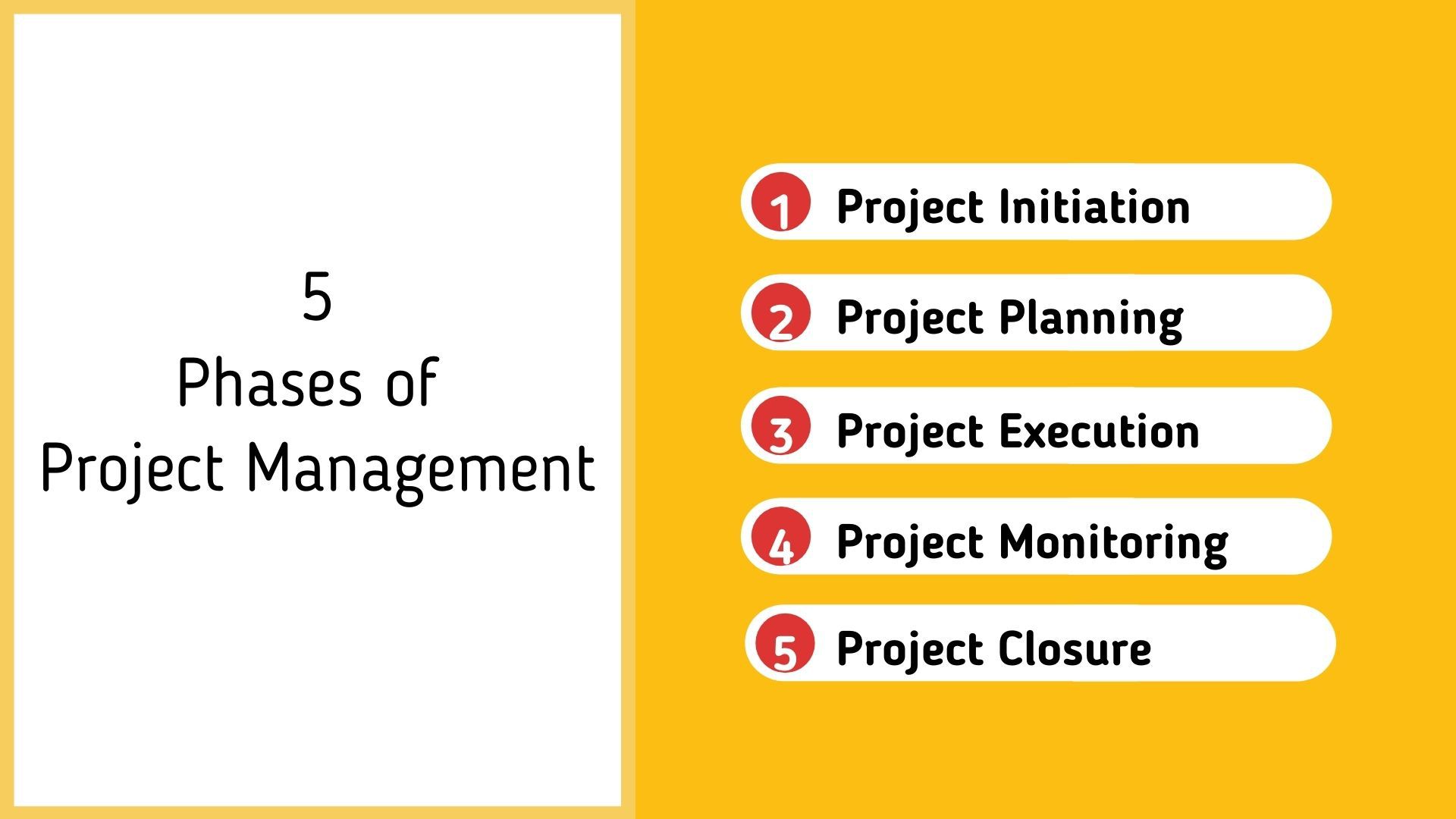
What is Project Management? Understanding Its Roles and Life Cycles

Project Management is the art of executing projects efficiently and effectively It involves planning, organizing, and controlling resources to achieve specific goals It is a crucial process that ensures the project's success and helps meet the stakeholders' expectations
"Project management is like juggling three balls - time, cost and quality. Program management is like a troupe of circus performers standing in a circle, each juggling three balls and swapping balls from time to time."
Project management is the intersection where art, science, and craft converge. As a project manager, you must blend these elements to design a methodical plan for scheduling and budgeting that aligns with both the project's predetermined structure and external factors.
Project management as a profession has been accepted in the world since time immemorial.
Every single project creates a unique product, result, or service.
The results of a project can be both tangible, such as a physical product, and intangible, such as improved customer satisfaction. Some project formats may involve repeating elements for deliverables. However, it's important to remember that at its core, a project is simply a temporary effort to achieve a specific goal or create something new.
Management is a social process that involves overseeing tasks and ensuring they are completed. Its focus is on planning and guiding the operations of a business. Project management, on the other hand, is a specific application of knowledge, skills, tools, and techniques to meet the requirements of a project. Understanding the origins of this practice is key to comprehending its meaning and importance.
History of Project Management
Project management may be recognized as a discipline in recent times of modern world processes and projects.
Throughout the history of the world, project management has played a crucial role in the creation and implementation of important crops, monuments, and strategies. None of these achievements would have been possible without careful planning, scheduling, budgeting, and goal-setting. Even ancient monuments, often seen as feats of spontaneous creation, were the result of meticulous project management.
During the construction of the Pyramids of Giza, the process included a meticulous approach of conceptualization, planning, execution, monitoring, and evaluation of the final outcome. Similarly, in modern times, the utilization of project management has become more efficient and effective, leading to successful completion of projects.
During the 1950s, industries emerged globally to support and develop their economies. To manage and manufacture efficiently, these industries required a structured approach. One such approach was the Gantt chart, created by Henry Gantt, which became widely adopted across various industries and companies. This chart serves as a simplified model for scheduling project plans and goals.
The Dupont Corporation developed the Critical Path Method in 1957 to improve the scheduling of plans. This innovative approach helped individuals identify programs that could not be delayed or modified and needed to be finished.
First Project Management Institute
The Project Management Institute (PMI) was established in the year 1969. It is the world’s largest non-profit membership association for the project management profession.
Since its inception, it has set standards for dealing with a project, its program, and portfolio management, offering training and certification.
The PMI was accredited as an ANSI standard in 1998.
In modern times, project management has evolved significantly, with the introduction of the ISO standard IS21500 in 2012. Unlike the past where workers were subjected to extreme exhaustion, the focus today is on providing better care to all stakeholders involved in the project. Moreover, project management now encompasses a wider range of skills beyond technical expertise, including business management skills like customer relations, strategy, and leadership.
Project work involves a temporary effort to create a unique product, service, or result. Operations management, on the other hand, involves ongoing and repetitive activities that produce the same output. Therefore, project management is needed when a task requires a one-time effort that is different from the routine operations of an organization. This can occur in various industries such as construction, software development, event planning, and marketing campaigns. Project management helps ensure that goals are met within a specific timeframe, budget, and scope while managing risks and stakeholders.
When a new product or service delivery brings about significant changes to a company's operations, it may require a dedicated project to ensure a smooth transition. However, it's important to note that ongoing business operations are not considered a project, but rather a continuous process that requires efficient resource management and meeting customer demands. Unlike operations management, which focuses on maintaining efficient operations, projects have a defined start and endpoint with the purpose of achieving specific goals.
Some projects require ongoing project management even after the objectives have been achieved. This is because operational stakeholders hold significant sway over the project and its impact on their future employment or endeavors.
Numerous fields require project management. It can be implemented on both big and small projects.
They are as follows
When launching a new website
Creating and launching a new consumer app or other product.
Introducing business, cultural changes, and processes to the organization.
Opening or closing a new office
Construction of offices, roads, or shopping malls
Executing an industry event like industry visits or conferences
Taking steps to change elements in businesses to comply with regulations
These are the few areas where project management is necessary.
Project Management Roles
There are several roles to be allotted under a project
1. Project Sponsor
The project sponsor collaborates with the project management team to oversee project funding, track progress, engage stakeholders, and define project scope.
As the primary advocate for the project, the project sponsor bears ultimate responsibility for its success. Typically a senior manager who initiates the project, the sponsor champions the project's benefits for their team and represents the interests of the project's customer.
2. Project Manager
A project manager plays a unique role as they differ from functional and operations managers. They are tasked with meeting the requirements of the project, team, and individuals involved. Essentially, they serve as a conduit between the team and the overall strategy.
Project initiation, planning, execution, monitoring and control, and finally, project closure. A project manager must have a clear understanding of these areas and how they interconnect to ensure successful project completion.
A competent project manager must possess a clear understanding of the project at hand. However, it is equally important for them to demonstrate their proficiency in project management by effectively utilizing their knowledge. This is what performance in project management refers to.
The project manager's personal qualities play a crucial role in project implementation. These qualities include attitude, leadership skills, core personality traits, motivation, and conflict management abilities.
3. Supplier
The responsibility of executing a project can either fall on an internal supplier like the developmental team, or an external supplier like an external contractor. The supplier is typically introduced to the project team by the main point of contact, which could be their technical expert, project manager, or account manager.
4. Stakeholder
Stakeholders are individuals or groups that have a vested interest in a project or organization. In the context of a company, stakeholders can include shareholders, employees, customers, suppliers, and even the surrounding community. Their involvement and support can greatly impact the success of a project or company.
All individuals or groups who have a vested interest in a project, or who may be impacted by its outcome, are considered stakeholders. These parties have the authority to influence project decisions and provide input on deliverables that align with the business's objectives. Stakeholders may originate internally, such as employees or management, or externally from the general public or other organizations.
The project manager plays the role of bridging the gap between the stakeholder and the project throughout the process to get feedback on the project step to step.
5. Clients
The client is the target group who needs to be satisfied or for whom the project was conducted.
Project Life Cycle during Project Management
The process involves a series of phases with clear beginning and end points, typically following a sequential order. The specific stages are determined by the management and control procedures of the company or organizations overseeing the project, taking into account factors such as the project's nature and its intended application.
During the project, there are certain phases that must be completed within a specific timeframe and budget. These phases can be broken down into functional milestones, partial objectives, deliverables, or intermediate results that align with the overall scope of work and financial resources. It is important to establish the start and end/control points for each phase in order to effectively manage the project. Now, let's discuss these phases in more detail.
The Five Phases of Project Management
As mentioned earlier, Project management has a set of phases, one coming after the other. There are five phases of project management-
1. Project Initiation
During this phase, the project is initiated and the scope is defined in order to gain a comprehensive understanding of the project. The focus is on identifying what is achievable and determining the starting point for reaching the end goal. The goal is to develop a clear idea of how to achieve the desired outcome.
2. Project Planning
: The success of the entire project hinges on the initial step of gathering all the team heads together. In addition, it is crucial to consider the inputs of relevant stakeholders to ensure that the project's path aligns with their objectives.the SMART method and the OKR method. The SMART method focuses on setting specific, measurable, achievable, relevant, and time-bound goals. On the other hand, the OKR method focuses on setting objectives and key results that are specific, measurable, achievable, relevant, and time-bound. Both methods are effective in setting goals, and the choice of method depends on the nature of the project and the team's preference. Once the goals are set, the team can move on to the next phase, which is planning.
2.1 SMART Goals
An approach ensuring that goals have been thoroughly thought-
-The S stands for Specific, finding specific points- who, when, where, how, what, and why.
-M for Measurable, to measure the success of a goal.
-A for Attainable, to identify what can be achieved and what cannot be achieved.
-R for Realistic, to understand and think it all out by being practical and attainable.
-T for Timely, to finish things within a specified time frame.
2.2 CLEAR Goals
A method used to encourage employees to work together and create a pleasant environment.
-C for Collaborative that is employees, working together in a collaborative process.
F for Feasible, which means ensuring that the project is practical and can be executed with the available resources and budget.
-A for Appreciable that is, break significant steps into smaller steps to achieve goals quickly.
-R for Refinable, that is, when new situations arise, one should be able to adapt to it.
3. Project Execution
There are essential steps to this phase. The deliverables are developed and completed, and it is time when tasks are completed accurately during the execution phase.
The bulk work begins here as you identify and mitigate risks, deal with problems, and bring in any changes when required. They are follows-
Develop a team
Assign the resources to the teams
Execute the project management plans accordingly
Procurement management if and when required.
Project Manager directs and manages the execution of the project.
Set up tracking systems to have a hold over everything.
Status meetings to see where the teams stand with their goals and objectives
Update the project schedule.
Modify the project schedule when needed.
4. Project Monitoring
To assess the progress and success of the teams in achieving the objective, this phase involves evaluating and measuring their performance as a whole. Project Managers rely on Key Performance Indicators (KPIs) to determine whether the project is on track or not. The KPIs used include:
Project Objectives- To measure if the schedule and budget are aligning with the goals of the project.
Quality Deliverables- To determine if specific tasks are being met.
The project manager is responsible for tracking the effort and cost resources to ensure that the project can be completed within the predicted budget. Additionally, they monitor any changes that may occur during the project to ensure optimal performance.
5. Project Closure
The final step of a project, closure, is crucial for ensuring that all goals have been met and that the completed work is widely accepted. A successful project closure is a methodical process that ensures all aspects of the project have been reviewed and evaluated, and that any necessary adjustments have been made. This step is critical for achieving the greatest possible benefit from the project and for ensuring that all stakeholders are satisfied with the outcome.
Any final paperwork or reports have to be submitted at this point for future reference when any such project is conducted again.
Conclusion
Effective project management entails more than just overseeing tasks; it requires a meticulous assessment of available time and budget, as well as the application of knowledge, skills, tools, and other qualities by the project manager to achieve the desired objective. However, success is not solely dependent on the project manager, but also on the team and other project members who play a crucial role in achieving the project's goals.
















